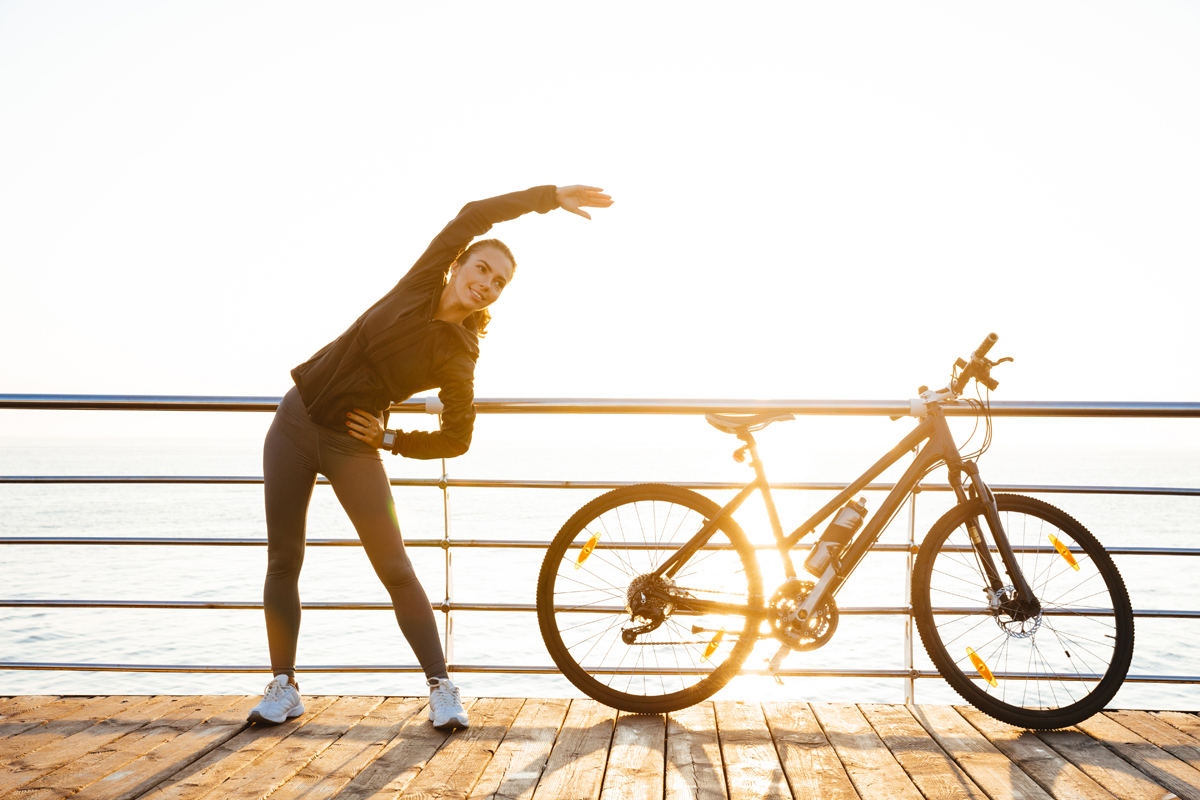
The natural response to repeated physical challenge is increased strength through adaptation. Repetition also builds “muscle memory” by reinforcing neurological pathways. Moreover, the repeated challenge activity builds mental confidence through familiarity and demonstrated improvement. These physical challenges to muscle and joint also create tension and stiffness which can be a source of reduced ability to exercise properly or attain further improvements in strength and coordination. Stretching is a slow, methodical and deliberate practice that requires patience but rewards with increased motion and flexibility. The reward for time and effort invested in stretching is undeniable while the failure to stretch limits motion, proper form, and invites injury that defeats the goal of increased strength. Accordingly, stretch and strengthen are both necessary for successful long-term improvement.
The Advocates Spin: Cyclists Stretch and Strengthen The Cycle of Advocacy with every Ride and Give 5 practice on and off the bike.
Cycling stretches the limits of riders both physically and mentally by combining the benefits of physical exercise with personal growth through the experience and perspective gained by traveling at the speed of bike. It is this very strengthening and stretching of the cyclist that lays the foundation for cycle advocacy. When practiced with Intention, one simple ride can improve or reinforce the physical strength, coordination, confidence, riding and advocacy skills of the cyclist.
Cycling can take riders to interesting places around the world and within themselves as they meet both the challenges of the ride and people from all walks of life in the course of travel. Traveling at the speed of bike is as much a state of mind and social experience as it is a measure of distance, time, and elevation. Cycling gives riders a broad and diverse experience, putting riders in touch with the physical world propelled by their own desire to see, feel, sense, and engage their world in a beautiful activity that provides a unique perspective. Cyclists know that riding can make them a better person physically and mentally – the strengthening and stretching of riding expands the cyclist as a human being, with the potential of making each rider a bigger person.
We cyclists should demonstrate these characteristics, the benefits of our passion for cycling, in our practices of Advocacy. Cycle Advocates can demonstrate the benefits of riding in the physical strength to ride according to SSEA and GIVE 5 practices, and the personal strength to execute the principles of these programs in daily activities and the face of adversity. We can strengthen ourselves and stretch beyond our limits in a Cycle of Advocacy that makes each advocate more capable and confident in their efforts to build an integrated community where cycling is valued.
Riding with the Intention of being a Cycle Advocate builds strength and skills for the individual that improves their cycling and their advocacy. When the cyclist adopts and executes the Cycle Advocates programs and practices, they are improving Advocacy Practices and expanding influence in the community in a win-win scenario.
Positive engagement with the community calculated to raise positive awareness of the value of cycling, on and off the bike, is rewarding for the individual and the community. Each action that builds identity, acknowledgement, and acceptance, increases the energy and strength of the cyclist and the cause for integration. When, for example, the cyclist acknowledges a driver with a High 5 Waive, Thanks, or other Courtesy, the driver feels better about themselves. This is one of the golden rules of friendship: “If you want people to like you, make them feel good about themselves.” fn1 Engaging advocacy through positive reward provides awareness of and community identity with the cyclist. Moreover, the positive engagement and reward sets an example that others who observe the interaction will want to attain. In this simple scenario, the cyclist gains identification with the driver, and lays the foundation for inclusion- the driver perceives the cyclist as a friend to protect rather than an impediment or element of chaos and unpredictability. The Cyclists’ strength and ability to stretch in positive Advocacy sets an example that builds understanding, empathy, and inclusion.
Positive engagement off the bike provides a broad variety of opportunities for the Cyclist to share experiences touting the benefits of cycling with others. To the non-cyclist, riding can seem foreign and inconceivable, but the Cycle Advocate can help relate the beauty and joy of a ride as well as the victories, rewards and broad experiences that cycling provides. To fellow cyclists, the Cycle Advocate can share the efforts and rewards they have experienced in building a community that values cycling. Cyclists should be ambassadors of the ride, spreading the benefits, growth, and innumerable gains that time on the bike can provide, by Giving 5 Percent of their time and/or 5 Rides to others in stretching and strengthening cycling in the community.
Cycling Advocacy is challenging and requires physical dedication and personal strength to Take the High Road, meeting adversity with a goal of inclusion. As detailed in the graphic, the Cycle of Advocacy applies to individual improvement and community building. Just like a good workout and stretch, the exercise of cycle advocacy can be challenging, exhausting, and rewarding with improved strength and flexibility that provides the momentum to move cycling toward the ultimate goal of integration as a valued part of the American community. The results for cycling are individual, immediate, communal, and far reaching.
Keep those wheels in motion.
1. Jack Schafer, PhD, (former FBI Behavioral Analyst), The Like Switch.